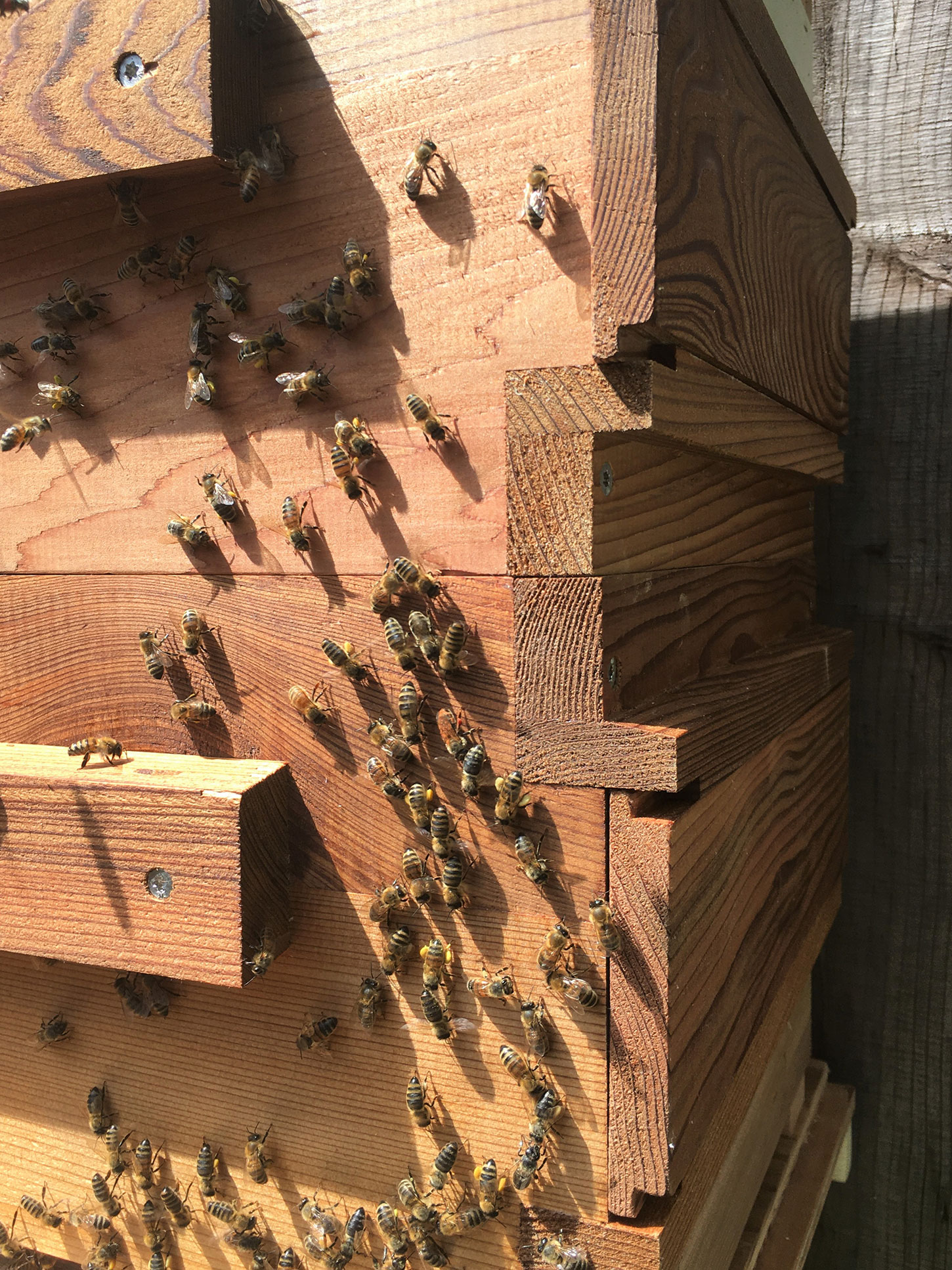HIVE FINISH & MAINTENANCE
The bees will take care of the hive inside so you may care for the outside.
FINISH
Beeboxing hives come unfinished and they will provide a home to bees for many years to come without any additional treatment. The oversized roof limits moisture from precipitation, and western red cedar is naturally resistant to moisture and decay and over time it will weather to a warm grey color. I recommend sealing the exterior of the hive to increase its longevity and help protect the wood (and bees) from the elements. To fully protect the exterior of the hive, finish the wooden portion of the hive roof, exterior of the hive bodies, and the plywood edge of the hive base. I do not recommend finishing the quilt box or any surface within the hive (including the the top surface of the hive base), and it’s best to leave that job to the bees because they will propolise the hive interior in order to regulate moisture and create a colony immune system. One exception is to seal the top surface of the top bars to make it easier to separate hive bodies without breaking comb in case the bees attach comb from an upper box to the underlying top bars.
There’s a few finishes I have experience with that are easy to apply and will provide good long term protection: Heritage Natural Finishes “Exterior Finish”; Tried and True “Original Wood Finish”; and Sikkens “SRD”. But I’m also a fan of using what’s around and the exterior of a hive will only require a few ounces of finish, so if you already have an exterior quality finish laying around then use that. If you choose to paint the hive, use an oil-based paint or something formulated to stick to cedar because cedar is resistant to water and most latex paints peel over time. Whatever finish you use, bees are sensitive to smells, and be sure to follow the label and allow plenty of time for the finish to cure before introducing a colony.
HIVE MAINTENANCE
A Beeboxing hive should need little maintenance over time. With changes in temperature and moisture the fit of the window insulation may become too tight or the sliding window cover may bind; and if so, gently sand the edge(s) of the insulation (or rub it on a concrete block or something semi-rough) and use a sanding block to remove a little material from the window cover edges.
After harvesting a box of honey I’ll generally scrape residual wax off the sides of the box (be careful if using a metal hive tool around the glass window), remove excess propolis from the top bar ledge and around the alignment pins so the bars can fully seat into the rabbet, and leave the box outside on a warm afternoon to let the neighborhood bees clean any residual honey (it’s best to place it at least 25’ from any active hive to not encourage robbing behavior).

